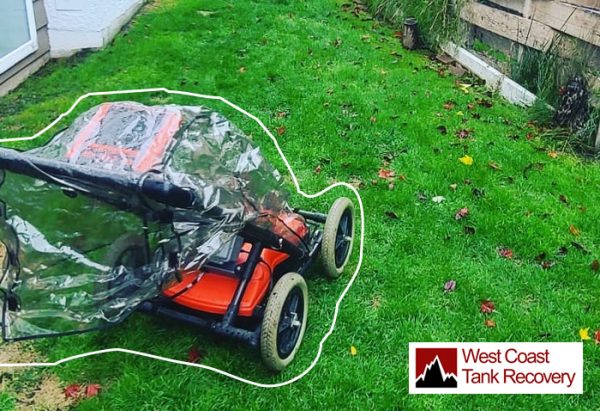 Fully Licensed and Insured
Fully Licensed and Insured Request an Oil Tank Scan
Request an Oil Tank Scan Request a Free Estimate
Request a Free Estimate

When it comes to something as serious as the possibility of a hidden underground oil tank on your property, you want to know with certainty what you’re dealing with. That’s why many homeowners in areas known to have underground oil tanks choose to have their properties professionally inspected.
There are several ways you can have your property checked for the presence of underground oil thanks, but most professionals will tell you that ground penetrating radar is often the most effective. However, how reliable are GPR scans really and is there still room for error?
Ground penetrating radar works by sending electromagnetic waves into the ground and capturing the signals as they bounce back. These signals are relayed to a receiver which then displays the data in the form of a cross-sectional image where the strength and speed of the returning signals help create a visual image of what lies beneath the surface.
While it may not sound overly complex, this technology is very precise in detecting changes in subsurface materials, like in this case, the presence of metal, oil, or space, all signs of an underground tank, without the need for exploratory digging. Accuracy and simplicity are two of the reasons GPR scans are favoured by recovery specialists and homeowners (and there are others), however, it’s important to understand that no technology is infallible and certain factors can influence your results, which is what we’ll cover next.
Short of digging up your entire yard, GPR scanning is the most effective way to detect and pinpoint the location of an underground oil tank. That said, a few key factors can impact its accuracy.
Soil Composition
First off, the type of soil on your property plays a big role in how well ground-penetrating radar scans work. It is much easier for GPR waves to penetrate dry soil than it is denser types of earth, and the more easily these waves can travel the clearer the results. Clay-heavy or water-saturated soils, on the other hand, can absorb and distort the signals, making it harder to detect objects like oil tanks.
Tank Depth
Most GPR systems can reliably detect objects at depths of up to 10 feet. But, if an underground oil tank is buried deeper than this (which is unusual, the average depth of underground oil tanks is about 2 to 5 feet), or if it’s surrounded by rocky or compacted soil, the radar waves might not reach it, and the resulting image may be unclear.
Interference from Other Objects
Interference from other foreign objects like rocks, tree roots, or even old utility pipes can also impact the accuracy of the GRR’s readings, in some cases, leading to false positives that might be interpreted as an oil tank when in fact it’s something else.
Operator Expertise
Avoiding issues such as false positives, or conversely, providing a negative result when there is an underground oil tank, relies on the experience of the GPR operator. Ground penetrating radar systems are sophisticated technology, but there is a human element to interpreting the results. Skilled technicians are better at reading and understanding the radar data and differentiating between an oil tank and other subsurface anomalies.
At the end of the day, GPR scans are as good as the technicians conducting them. To get the most reliable result, you need to hire a reputable company, specifically one with experience detecting underground oil tanks.
As an added measure of security, it’s usually a good idea to combine ground penetrating radar with a secondary detection method, like for example, local municipal records, or a visual inspection looking for outward signs of an oil tank such as old vent pipes or feeder lines.